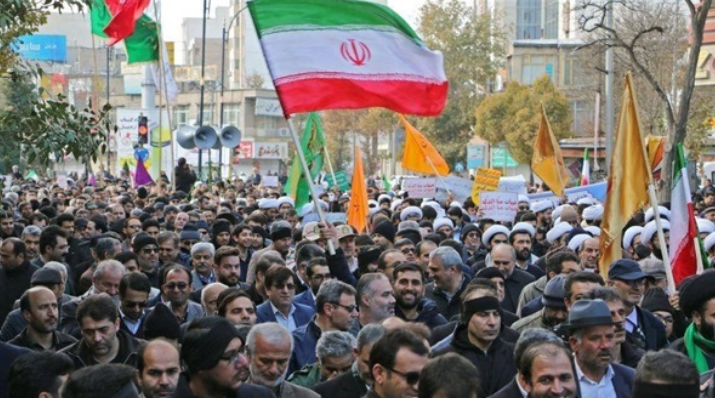Eslam Mohamed
Popular protests returned to the Iranian streets again, with water being the cause this time, as the historic city of Isfahan erupted with anger in protest against the government’s mismanagement in this important file.
Affected farmers gathered in central Isfahan, protesting against water scarcity and the drying up of a major river in the city, according to Iranian state TV.
Video footage circulated by the demonstrators showed gathering in the dry stream of Zayanderud, which is a large river that penetrates one of the most prominent historical cities in the country and passes under the famous 33 Bridge, but its waters were cut off about two decades ago, with the exception of a few periods at different stages when the gates of the Nakuabad Dam are opened.
For years, residents have complained about diverting river water to the neighboring province of Yazd, which includes large desert areas, and wasting this water wealth due to wrong decisions. They organized angry protests because of this, and on October 23, the people destroyed equipment intended for transporting drinking water to Yazd province to prevent their water from being stolen.
Despite the promises of Iranian President Ebrahim Raisi to work on solving water problems in the central provinces of Iran, including Isfahan, Yazd and Semnan, these promises have not been fulfilled and there is no indication that they will be implemented.
The Zayanderud River, with a length of more than 400 km, has turned into a seasonal river in recent decades due to climatic changes, successive droughts and population density. Human factors contributed to the crisis, such as increasing the extraction of water from the source, its use in factories, and the diversion of water to the desert provinces.
Despite the government’s attempts to calm the masses and the visit of Energy Minister Ali Akbar Mehrabian to the region and his meeting with a number of farmers in the western province of Isfahan, the moves did not result in a radical solution.
Isfahan is the third largest city in Iran, with a population of about two million, and includes Naqsh-e Jahan Square, which is on the UNESCO World Heritage List.
Iranian officials had previously complained during the summer months that the country was suffering from a severe drought, mainly due to the scarcity of rainfall, ignoring the negative role of the government.
In April, the Iranian Meteorological Authority warned of an unprecedented drought and levels of precipitation that were much lower than normal.
In the oil-producing province of Ahvaz, residents have taken to the streets due to lack of water, and there have been protests against power cuts in other cities.








































admin in: How the Muslim Brotherhood betrayed Saudi Arabia?
Great article with insight ...
https://www.viagrapascherfr.com/achat-sildenafil-pfizer-tarif/ in: Cross-region cooperation between anti-terrorism agencies needed
Hello there, just became aware of your blog through Google, and found ...